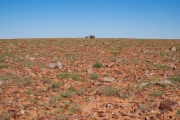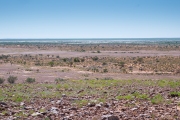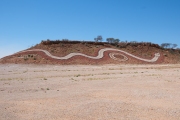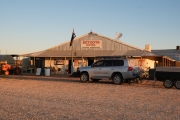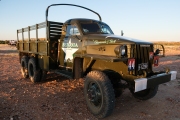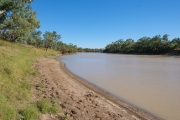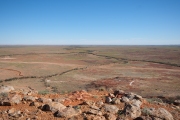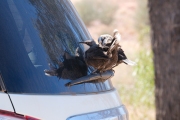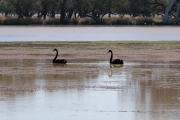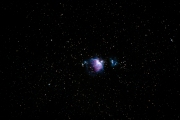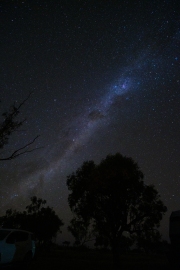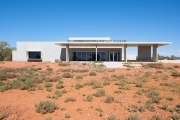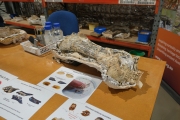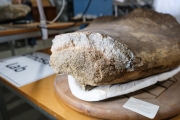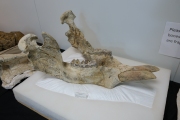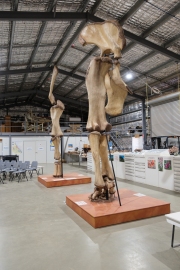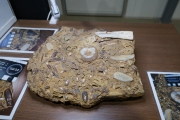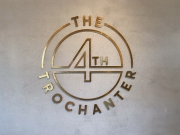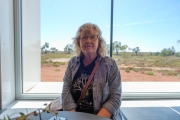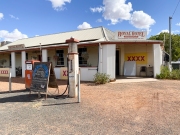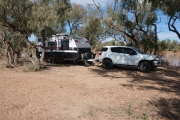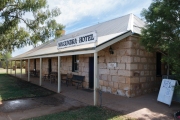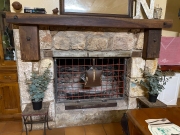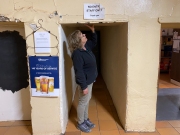
The Birdsville Development Road passes through Sturt’s Stony Desert. The desert comprises large areas of gibber plains. Gibber comes from an Aboriginal word for stone. Gibbers are formed where exposed rock, typically quartz or limestone, has been broken down to the size of gravel. Desert winds polish the gravel and give them a varnish of iron oxide giving them their distinctive colour. On this trip though many of the plains looked green from the rain and floodwaters that have been in the area.
On our way to Betoota we stopped atop a hill with a great view of the Diamantina River in flood. No dusty Diamantina (Redgum song) today!

Betoota started life as a customs post to collect taxes for stock travelling along the route. The hotel was built in the late 1880s but closed in 1997. It has since reopened and is a great place to camp and have a beer. We arrived when all the cold weather was happening down south and there was a freezing southerly blowing. Luckily the veranda was protected from the wind and we had a few drinks with fellow travellers. Dinner was great with everyone sitting together and talking about their travels. Didn’t see one copy of the Betoota Advocate though!
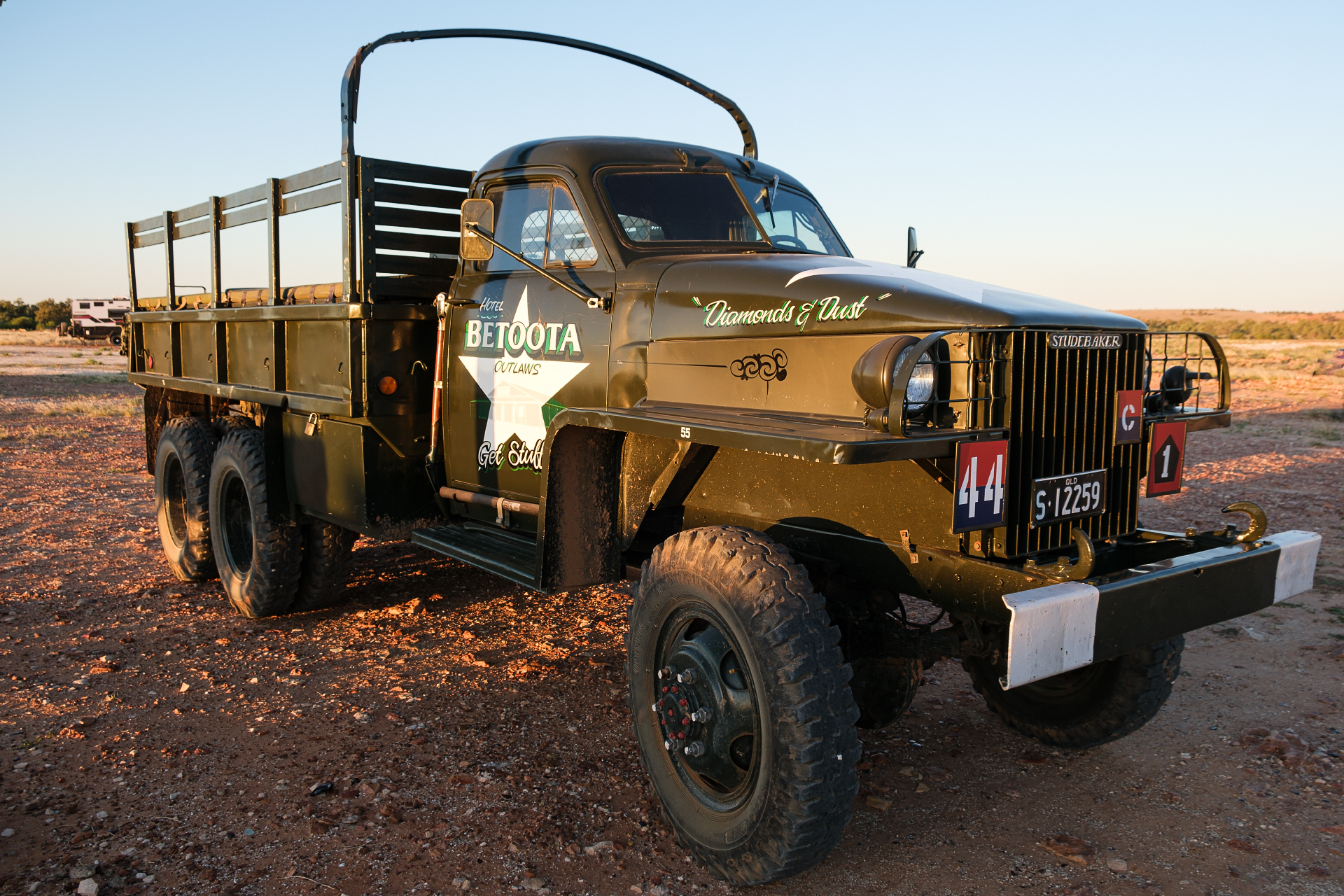
We had a quick stop in Windorah for fuel before heading out to Cooper’s Creek for our night camp. The last time we were in Windorah was when the Big Red Bash was on and being the last fuel stop before Birdsville there was a queue about a kilometre long, with three rows of traffic being directed by police through to the bowsers. Luckily we didn’t need fuel on that trip.

We arrived at ‘The Lake’ in Quilpie the next day and there were hardly any campers so we were able to pick a great spot down by the water. We’ve camped there before and were keen to go back. It’s very peaceful with beautiful sunsets and amazing birdlife. Lost count of the number of different birds we saw.
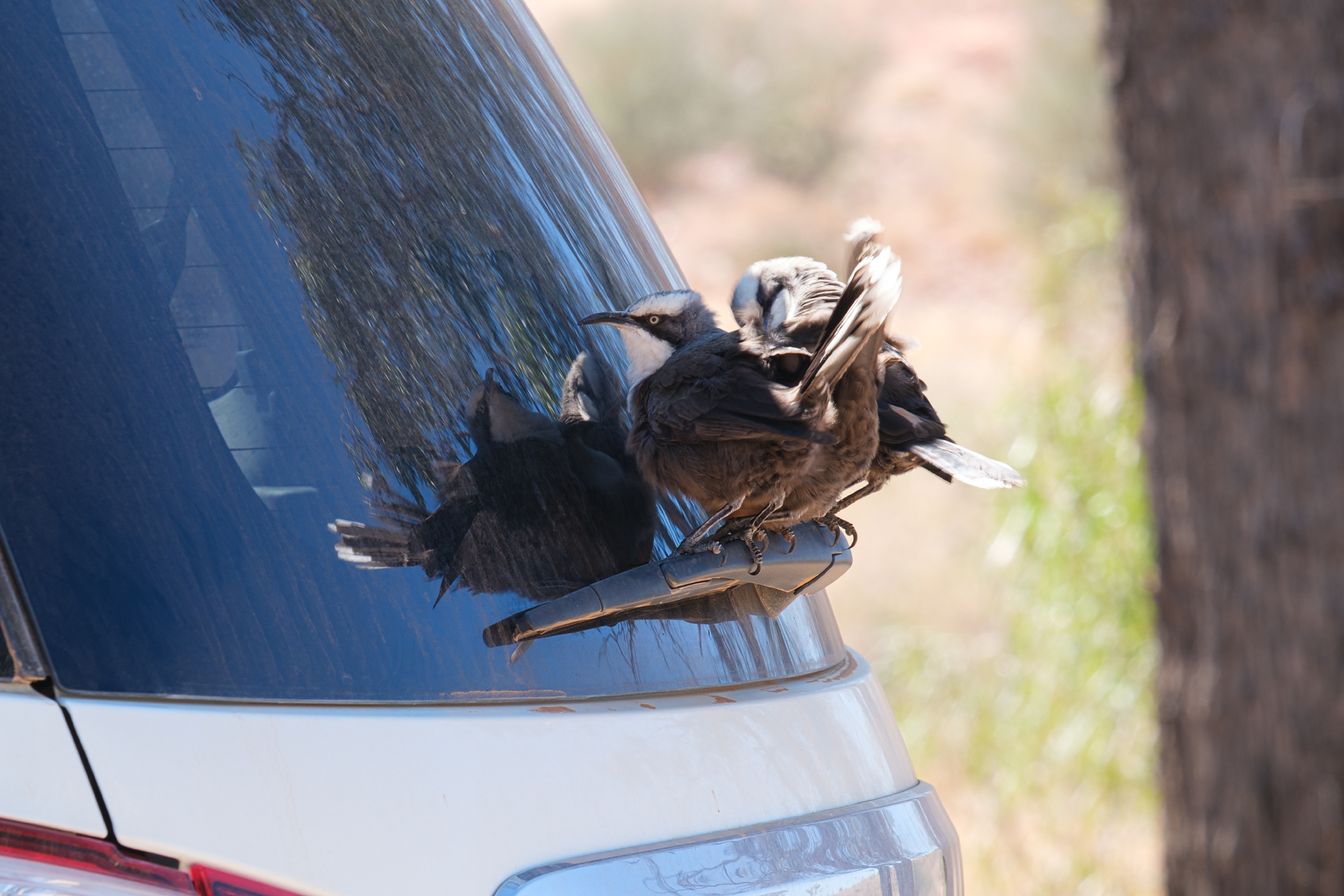
From Quilpie we started the Natural Sciences Loop. Our first stop was Eromanga. Ermonga has the Natural History Museum where a number of locally discovered dinosaur remains are collected and preserved. The largest of these is ‘Cooper’ – an Australotitan cooperensis. They believe Cooper would have been 30 metres long and 6.5 metres high. A big dinosaur! They also have a variety of different megafauna there including a Diprotodon optatum – a giant wombat that would have weighed 2-3,000kg.
Judie had a special interest in the museum as she evaluated and approved a regional grant back in 2013 that helped them get established.
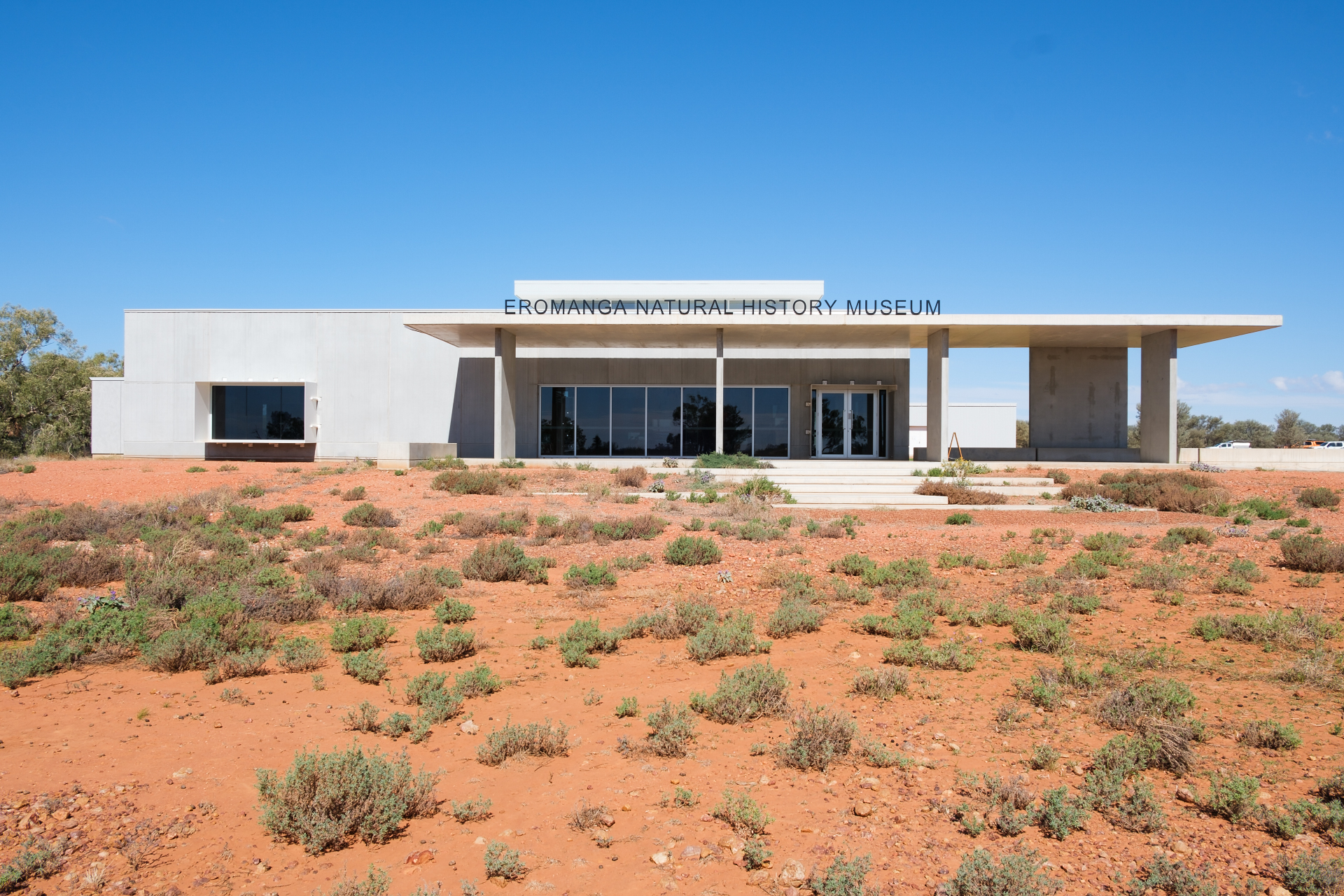
Noccundra was the next stop with a nice camp beside the Wilson River. The Noccundra Hotel was celebrating 140 years of operation this year so we had to help them celebrate! Nice meal as well. Starting to be a theme here…
These areas have a number of oil and gas fields. It was interesting driving along and seeing the oil pumps working away in the distance.

Thargomindah was the last part of the loop for us. ’Thargo’ has a great T-shirt that says London, Paris, Thargomindah. That’s because Thargomindah was the third town in the world to have public electric street lights!
Unfortunately, the only grocery store burnt down last year. The local roadhouse has stepped in to help until a new one can be built, but with recent flooding, supplies into the town have been difficult at times. The local cafe was running out of items when we were there but were expecting a delivery later that day.
Well, the Cunnamulla fella is next!
‘Now I’m a scrubber, runner and a breaker too
I live on damper and wallaby stew
I’ve got a big cattle dog with a staghound cross
I never saw the scrubber we couldn’t toss
‘Cause I’m the Feller from Cunnamulla
Yes I’m the Cunnamulla Feller’
Some more photos. Click on an image for full size.
